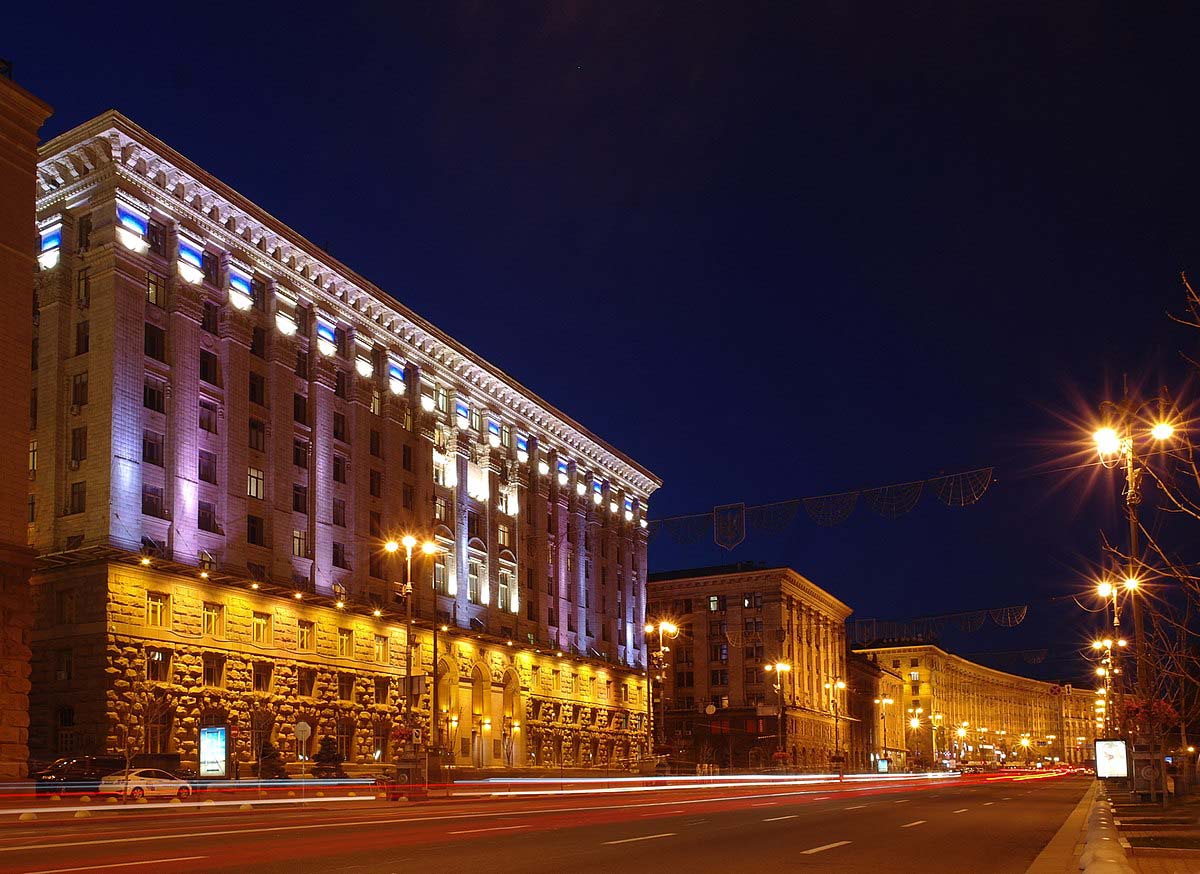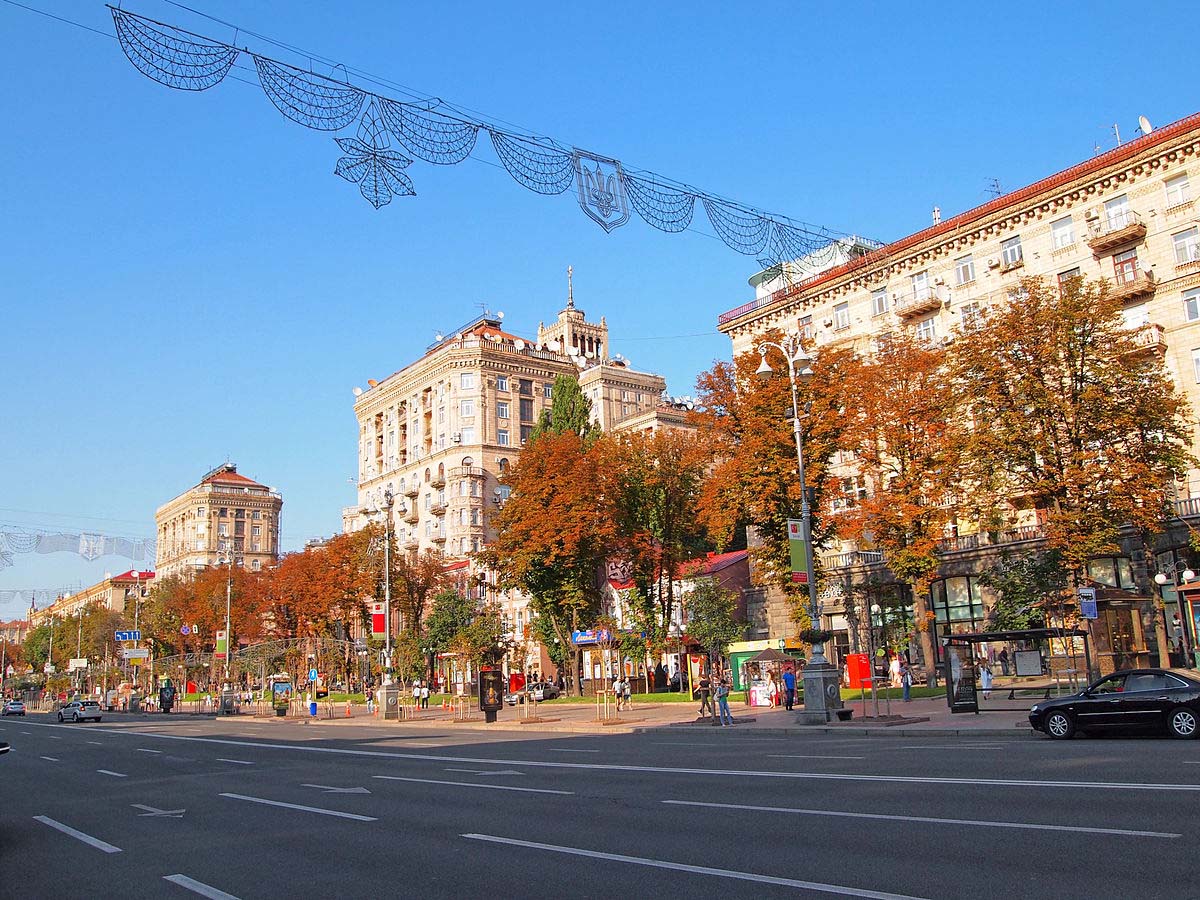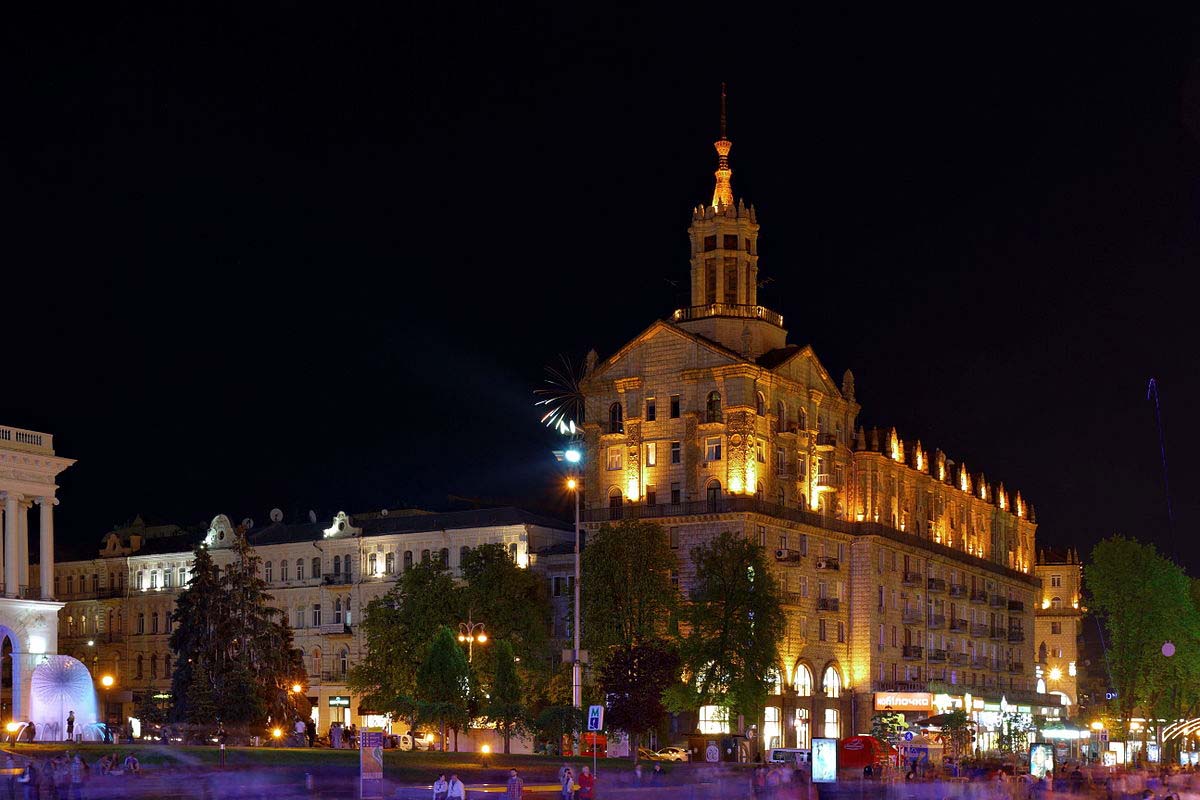The beginning of the history of Khreshchatyk as a city street dates back to 1797, when the Contract Fair was transferred to Kyiv from the city of Dubno. The famous Ukrainian historian Nikolai Zakrevsky writes about Khreshchatyk at that time: “In 1797 there were no buildings here, and in general all the populated areas on Khreshchatyk were just empty space at the end of the last century.” The first house on Khreshchatyk is considered to be the two-story stone house of the landowner Onufy Golovinsky, who appeared here at the end of 1797. Massive development of the street began in the late 18th and early 19th centuries. At first, they built up the area from European Square to Proriznaya Street (on the right side), and in 1803 they began to build on the left side. Khreshchatyk acquired its final outline in the plans of Kyiv in 1837; it was extended to Bessarabska Square and given its modern name, which since 1869 has been officially assigned to the street.
In 1892, the first electric tram in the Russian Empire began to travel along Khreshchatyk, the line of which went to Podol. After the capital of the Ukrainian SSR was moved to Kyiv, a massive reconstruction of the street began. Several new houses were founded, most of which remained unfinished and were destroyed during the Great Patriotic War. Among the objects of pre-war construction one can highlight a department store (one of the few buildings on Khreshchatyk that survived the war). In 1934, the tram line on Khreshchatyk was dismantled, and in 1936, instead of trams, trolleybuses were launched, the roadway was widened and covered with asphalt.
On September 24, 1941, a few days after the occupation of Kyiv by German troops, a series of explosions began on Khreshchatyk (according to one version, the explosions were staged, organized by the Germans). The first to explode was “Children’s World” by architect Vladislav Gorodetsky, and the blast wave detonated ammunition in other buildings. The city center then burned out completely and was not restored during the war. In 1948, the project for the restoration of Khreshchatyk was approved and according to it, it was decided to rebuild the very center of the city, maintaining the configuration of the streets, but completely new buildings would be built, in the “Stalinist Empire” style. In 1955, Khreshchatyk looked like a single architectural ensemble: the profile of the street is asymmetrical – the roadway is 24 meters, two sidewalks of 14 meters each, separated from the roadway by a row of trees, and a chestnut boulevard on the right side, which separate the residential buildings from the roadway.
In 1960-1980, only single houses were built, compared to the recovery period. During the reconstruction in 1978, on the corner of Independence Square a building with a tower and chimes was built (completed in 1985) – council trade unions of Ukraine. The architectural motif of this building was continued by the building of the Khreshchatyk Hotel and the house of the Novosti agency, which was erected a little later. On the right side of the Maidan, on the site of the former City Duma, a square was laid out, which ends in its semicircular part with five ray streets rising up to the old city. In 1982, the Lenin House Museum was built on European Square, now it is the Ukrainian House. Currently, Khreshchatyk has become a mandatory place in the city visit program for guests of the capital and its residents during major holidays. On Saturday, Sunday and on public holidays, traffic on the street is blocked – the street becomes pedestrian during this time. Open-air concerts are often held here, and military parades are held annually on August 24, Ukraine’s Independence Day.


